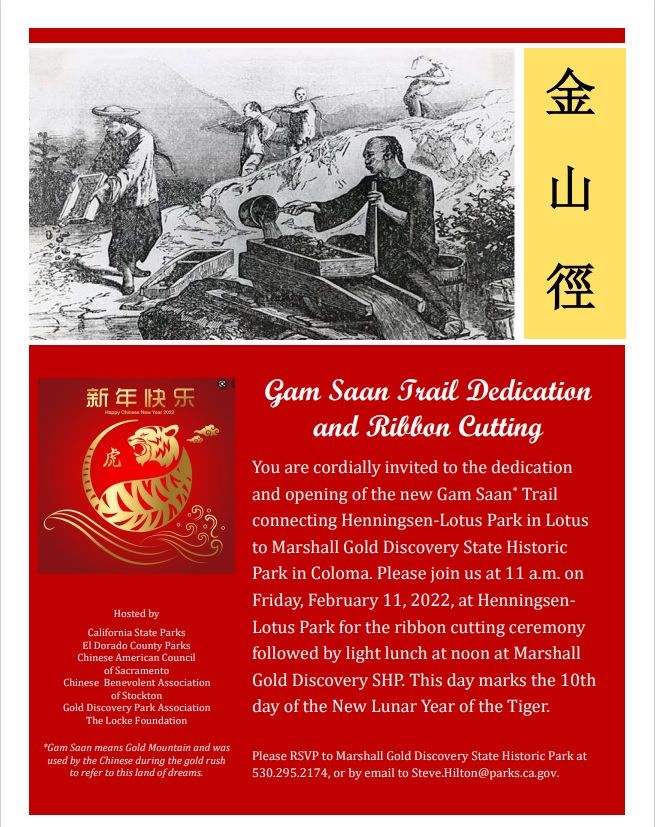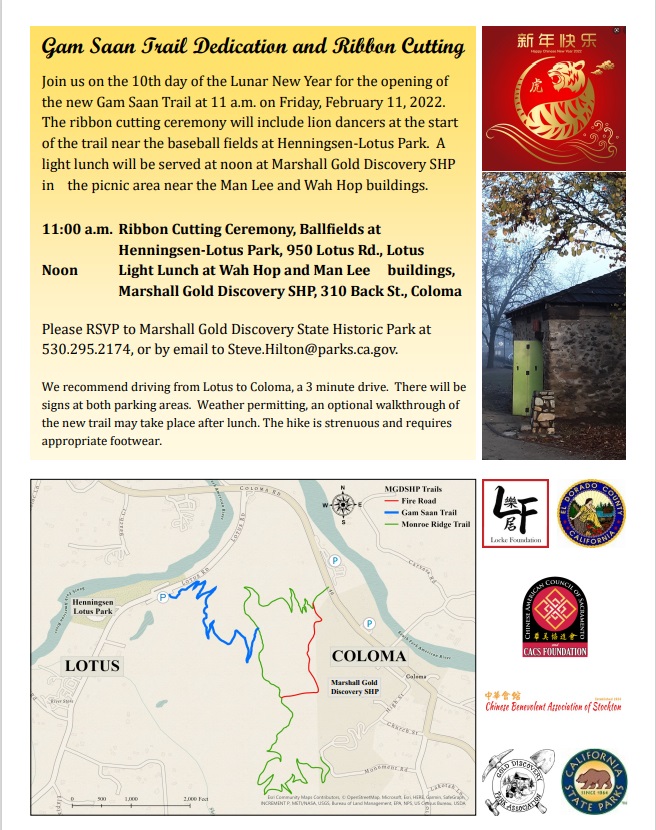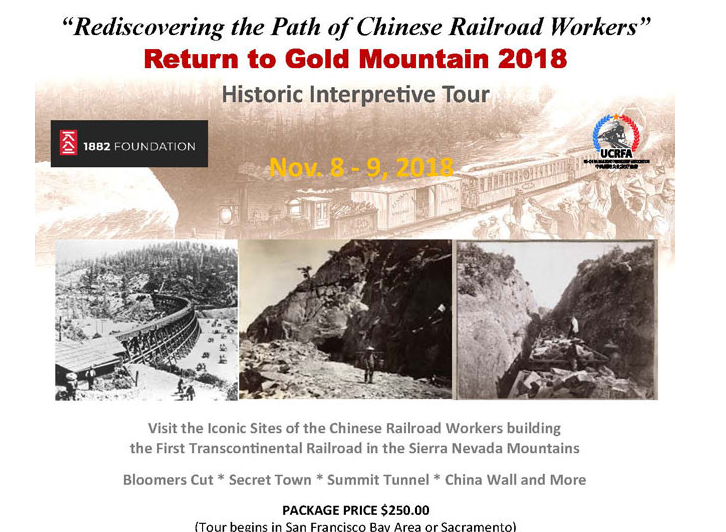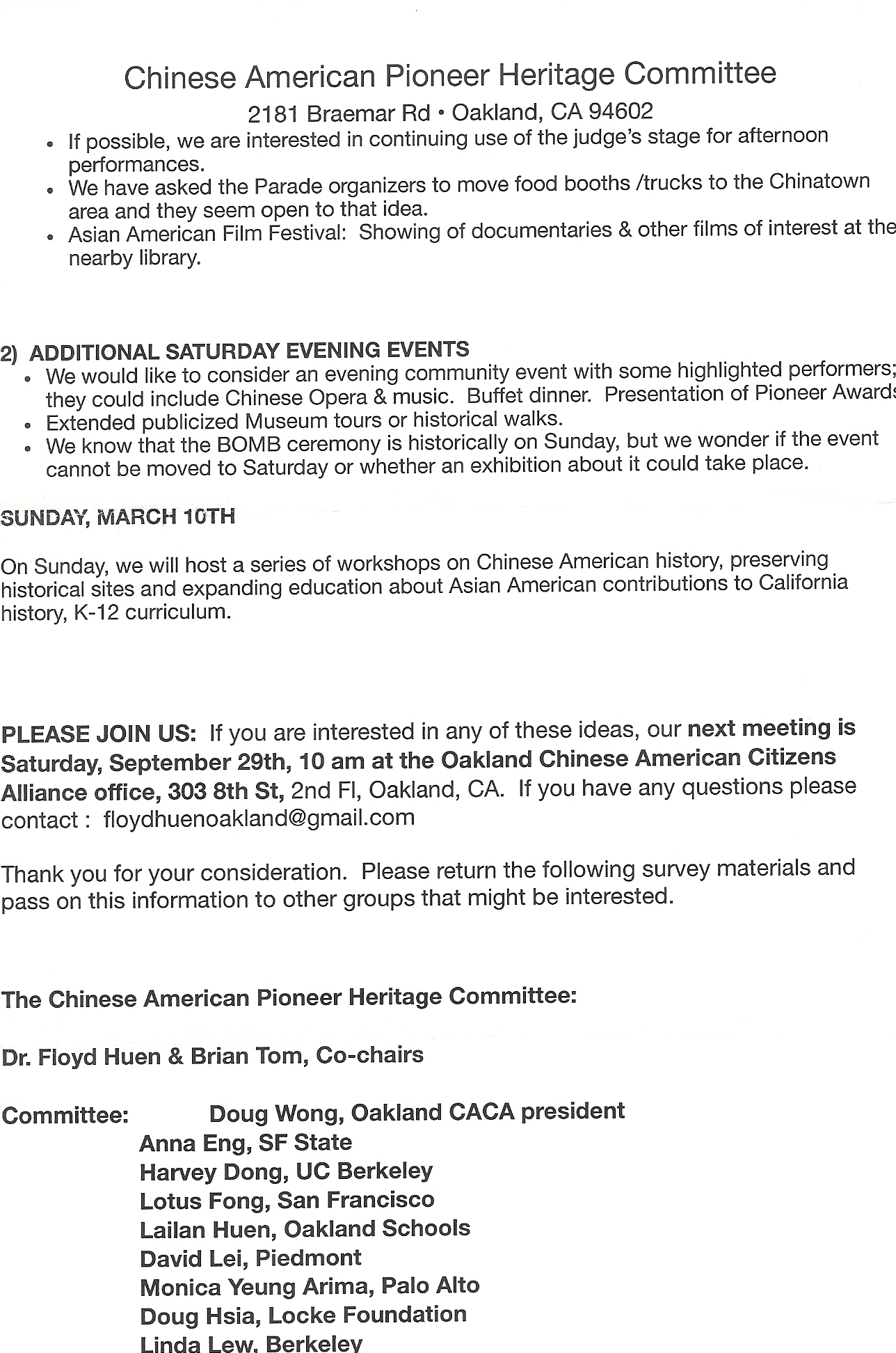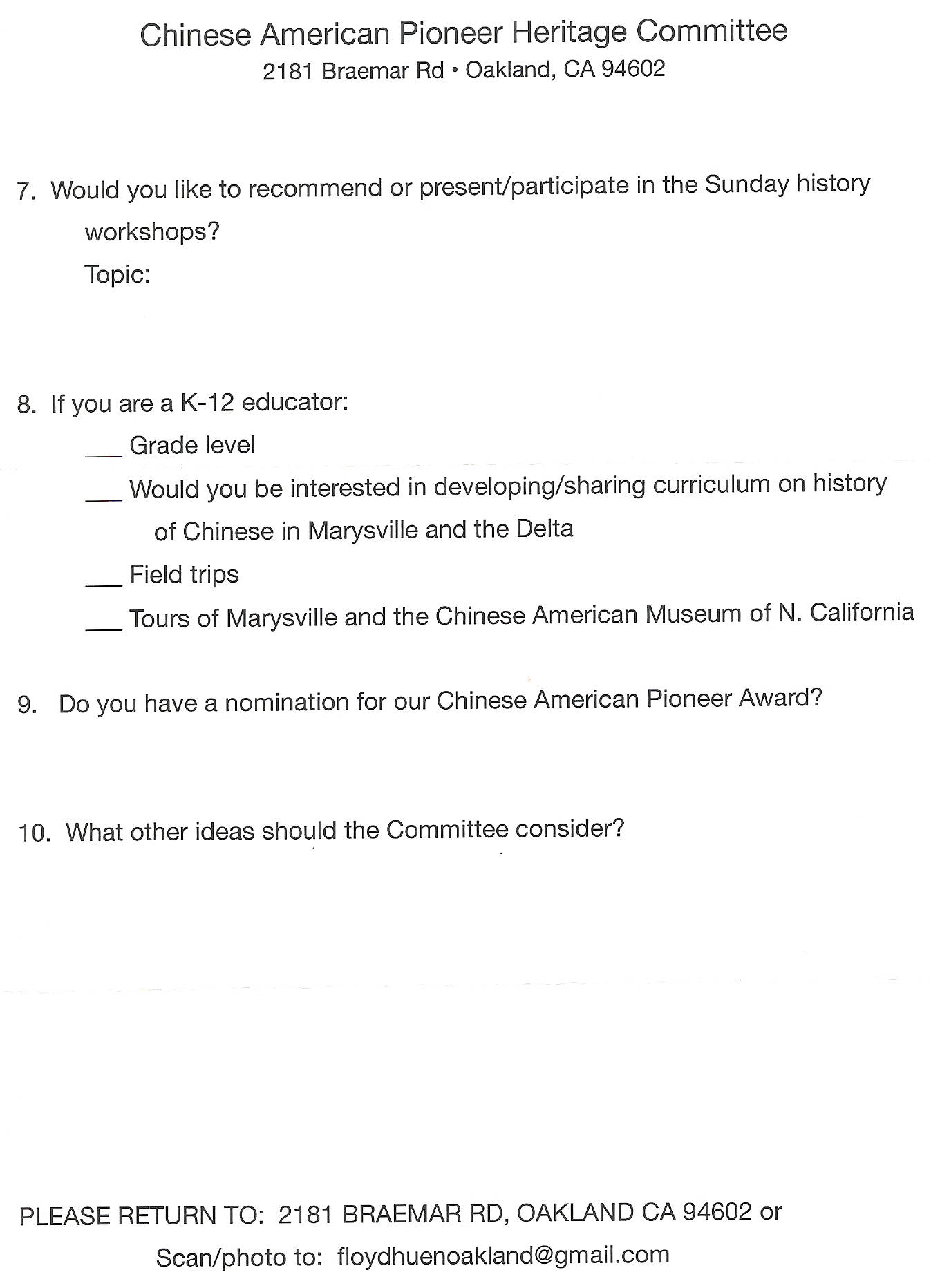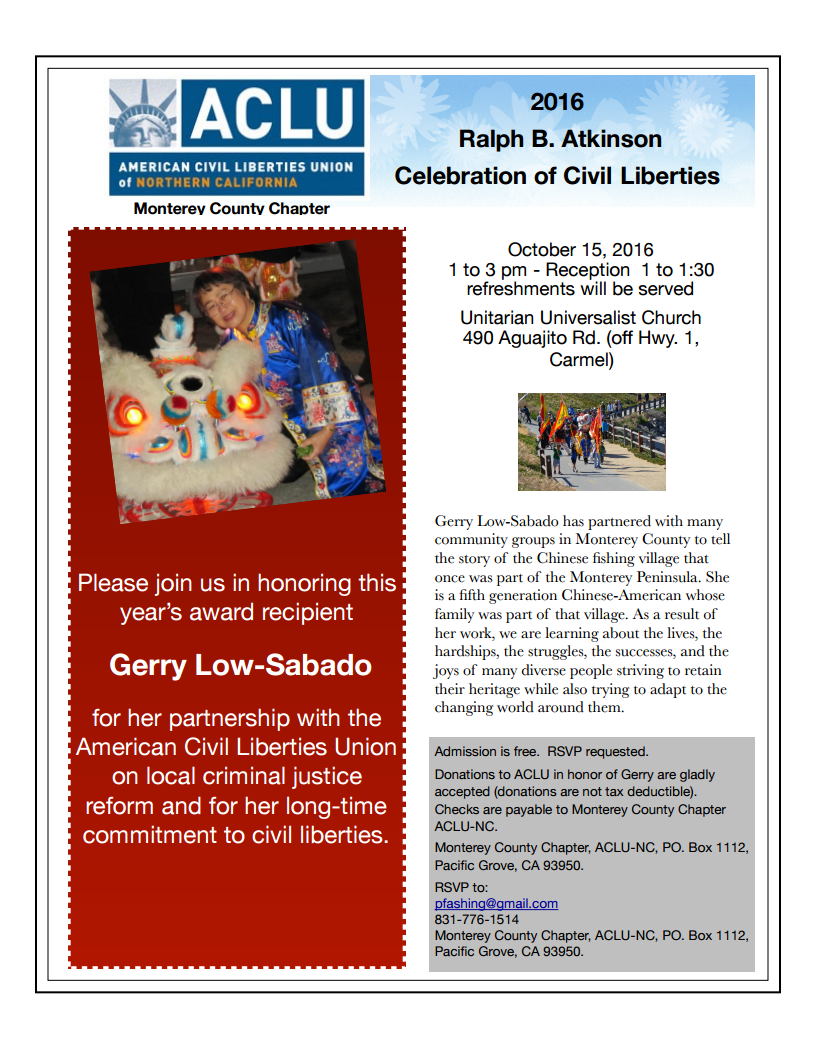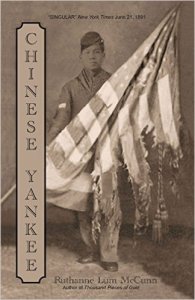Marshall Gold Discovery State Historic Park To Dedicate a New Hiking Trail honoring Chinese American Forty-niners
Mountain Chef: How One Man Lost His Groceries, Changed His Plans, and Helped Cook Up the National Park Service – Book Review
In Annette Bay Pimentel’s wonderful new children’s picture book “Mountain Chef: How One Man Lost His Groceries, Changed His Plans, and Helped Cook Up the National Park Service” readers are given the enjoyable treat of hearing a great American story of California and the west. “Mountain Chef” recounts a tale in the true to life exploits of Chinese American cook extraordinaire Mr. Tie Sing as he undertakes the vital task of cooking exceptional meals and providing hospitality and home-like comforts for the members of Stephen Mather’s elite Mountain party of 1915.
Readers familiar with Ken Burn’s documentary film series on the National Parks, “Americas Best Idea” (episode 3) will recall that Stephen Mather (the future first director of the National Park Service) spearheaded an all-out campaign in 1915 to establish the National Park System. They key to this campaign was to have a select group of rich, powerful, and influential men experience firsthand Sequoia National Park and the Sierra Nevada Mountain range. As Mather saw it the expedition would not be a success if his mountain expedition consisted of travel by horseback through exquisite natural scenic sites, followed by giving a man “a poor breakfast after he has had a bad night’s sleep…[resulting in a traveler who] will not care how fine your scenery is..” Food and comfort for the members of the 1915 expedition would be a vital factor in making their park travels a transformative peal experience thus ensuring the successful of wooing these powerful men of the 1915 mountain expedition.
As a result of Mr. Tie Sing’s reputation growing out of decades of work as a trail cook running a field kitchen for the mapping teams of United States Geological Survey (USGS) geologists, Tie Sing was hand-picked by Chief USGS geographer Robert Marshall to cook for Mather’s 1915 mountain expedition. Prior to 1915, Tie Sing’s work cooking for USGS geologists teams mapping the Sierra Nevada mountain range resulted in the Chief Geographer naming a 10,552 feet mountain peak “Sing Peak” in 1899 to honor Tie Sing for his contributions.
In “Mountain Chef” author Pimentel focuses on the key role Tie Sing played in the Mather Mountain Party of 1915. This overland expedition of rich and powerful American men is part of the founding lore of the National Park Service. Pimentel’s very thorough research into the life of Tie Sing and the importance of the Mather Mountain party provides for the detail that brings this story to life. In author Pimentel’s hands, Tie Sings story captures the right tone and gets just about all the notes just right, e.g.,
“Tie Sing was a frontier baby, born high in the mountains in Virginia City, Nevada,” “America was a tough place to be Chinese. Bosses paid Chinese workers less than white workers…,”“Tie Sing…had American dirt under his fingernails—and dreams as big as the country he loved,” “…Tie Sing, a mountain-loving American who knew how to plan.”
Pimentel’s story telling is accompanied by page after page of rich evocative full color illustrations in watercolor by artist and author Rich Lo. Pimentel’s tale moves readers along and all the while entertaining, teaching, and providing moments for reflection. A minor quibble would be the use of the term of “fortune cookie” to refer to the baked goods which Tie Sing used to present hand written laudatory messages to each member of the party. No historical record exists as to the exact type of cookie or baked good used. While the 1915 Mather expedition pre-dates the generally accepted dates for the creation of the familiar folded vanilla flavored wafer cookie that constitutes the “fortune cookie,” as an interpretive device the use of today’s widely familiar fortune cookie creates a widely accessible analogy that would be familiar to today’s young readers.
The end of the book contains several pages of factual background material on Tie Sing, the wide spread anti-Chinese sentiment of the 19th century, the Mather Mountain party and the National Park Service. Rare black and white photos of Tie Sing in the field and manning his field kitchen borrowed from the collection of the Bancroft Library are included.
Tie Sing’s narrative is a story of our west to which all Americans should be exposed. His tale of hard work, perseverance, and dedication is an inspiring narrative that will inspire parents and young readers with a vision of a richer and truer outline of the multiple threads of American life. Chinese Americans readers and parents will welcome this wonderful edition to the small but growing body of culturally sensitive but excellently written children’s books. What makes Annette Pimentel’s book stand out further is its contribution in bringing this Chinese American story farther into the arena of American public history.
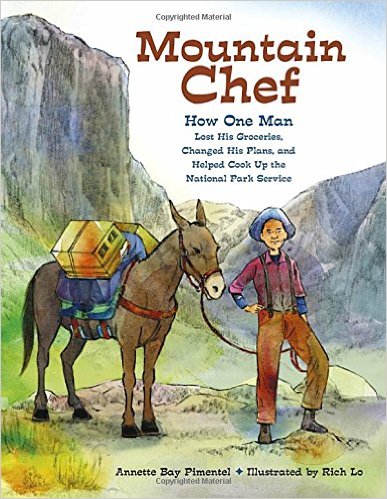
Check out the Chinese American Heroes Website
I recently came across an interesting website called Chinese American Heroes. The mission of this website (which can be found at http://chineseamericanheroes.org/) is
To recognize the significant contributions Chinese Americans have made to America and the world at large
To provide accurate, positive, and constructive stories and reports about Chinese American contributions to America
To provide positive role models for our youth and education about Chinese American history and contributions to America
The history section contains valuable short reads that make for interesting reading.
We the People Website – Chinese Exclusion Act Apology Petition Fails
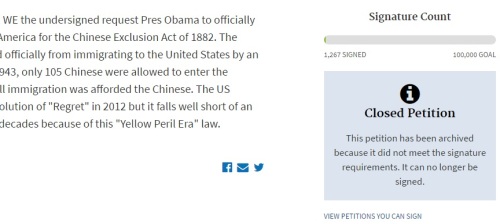 June 25, 2016 – The latest in an effort to get an official government apology for the enactment of the Chinese Exclusion Act, in the form of an online petition on the White House sponsored government site “We the People,” failed last month. To see the petition online, go to (https://petitions.whitehouse.gov/petition/official-apology-chinese-exclusion-act-1882).
June 25, 2016 – The latest in an effort to get an official government apology for the enactment of the Chinese Exclusion Act, in the form of an online petition on the White House sponsored government site “We the People,” failed last month. To see the petition online, go to (https://petitions.whitehouse.gov/petition/official-apology-chinese-exclusion-act-1882).
This petition set up online by one K.C. was one of numerous petitions started by ordinary citizens on the “We the People” official government website established by the Obama White House. The website, and its online forum for citizen initiated petitions, was established by President Obama’s administration in 2010. The site is designed to allow citizens to create petitions in order to encourage civic participation in the political process and as a means for the White House to gauge public sentiment. For petitions to receive consideration for action from the White House a minimum threshold of 100,000 signatures must be collected online on the website. In order to show that a petition has public interest, the threshold number of signatures must be gathered within a 30 day period after the petition is started.
The We the People web site enables citizens to search the site for current petitions that are open to gathering signatures, sign a current (open) petition, and create and start a new publicly visible petition. If a petition does not receive the required number of signatures within the 30 day period, the petition is closed to signatures and it remains viewable online for a period of time as a historical artifact. Petitions that do not reach the signature threshold may receive an online public reply from the White House. Petitions that meet the threshold will get a White House reply.
When the “We the People” web site was established 5 years ago, the threshold requirement for a petition to receive acknowledgement and a reply from the White House was 25,000 signatures in 30 days. Because of the number of petitions started (many of which fail to meet the threshold) the number of signatures required has since moved up threefold to 100,000 signatures that must be gathered within 30 days.
While K.C. (the person who started the petition on the web site), should be credited for keeping the need for a government apology for the exclusion act alive as an issue, the campaign to enlist the Asian American community , and other stakeholder communities to collectively press for this demand as a cohesive political block using the We the People website as a forum, seems to have been somewhat under the radar.
Although, the ideas and demands expressed in a petition that does not achieve the minimum number of online signatures are not blocked from the We the People site from a future 2nd, 3rd or even 4th attempt, repeated failures could create a very negative situation where there is a documented trail of evidence that could be used by some to suggest that the ideas expressed in a petition are so outlandish or so trivial or so inconsequential that even the very community that is most directly affected does not show any interest in it. For the May 3, 2016 petition started by K.C. only 1,267 persons “signed” the online petition within the allotted 30 day period.
According to the Census Bureau’s 2014 population figures in 2014 there were 4.5 million Chinese Americans. Let us hope then that those 1,267 signatures represent neither the justness of the ideas in the petition nor the public support for an apology, but rather poor execution. Clearly any future attempt at an online petition regarding an apology from the Federal Government for the exclusion laws must be better organized. If not the risk is having the concept of an apology losing all credibility.
What needs to be done, if the threshold number of signature is to be reached, is to first conduct a vigorous pre-petition campaign. A kickoff date should be announced for when a new petition will be filed online (this of course starts off the 30 countdown clock). The proposed kickoff date to start a petition should be at least 6 months in advance. Use a meaningful date; a spring date could be April 28th. For in 1869 April 28 was the day on which Chinese American railroad construction workers — or as historian Alexander Saxton has called them – the Army of Canton in the high Sierra, hand-laid 10 miles of track in one day. This was a feat that was never surpassed. This pre-exclusion era date brings to mind a period when the full effects of decades of demonization of Chinese immigrants that led to later anti-Chinese atrocities and exclusion, had yet to come into full fruit.
In terms of campaign organization, if a fall date is better target for a kickoff date, then December 17th is a good symbolic date for in 1943 the Magnuson Act repealing the exclusion acts was passed by Congress. So, December 17th could be used as well as a possible campaign kickoff date.
Once a date is set, call to action letters, fact sheets, posters, images, personal interest video appeals, need to be circulated via email networks, listservs, phone trees, social media such as Facebook, Twitter, Tumblr, Snapchat, and most importantly face to face interactions with family, friends, and other stakeholders and allies. Viral marketing is almost cost free beyond the costs for labor inputs. If well organized, a wide range of non-profit stakeholders with a 501(c)(4) incorporation status that allows for political lobbying should in theory be open to being enlisted to pass the word along. All campaign related marking media should be pointing to the kickoff date, when the petition will be started and its attendant countdown clock begins. That kickoff date begins a campaign, and if in 30 days the We the People petition fails to get sufficient numbers, the kickoff date, can still serve as the date kickoff date for an organized long term campaign in which the online petition is just one platform. The use of the online petition tool should be concurrent with the use of a wide range of other tools and other efforts.
In the mid-19th century, when Chinese workers were proposed as a source of construction workers for the transcontinental railroad, critics said they were not big enough to do the job. In 2015 the population of the United States was estimated at 320 million persons. Of this only 4.5 million are Chinese Americans. It could be argued that this population is big enough to do the job of applying enough political pressure to get the federal government to apologize for the exclusion act. With the digital and social media tools available today, I’ d say we have more than a Chinaman’s chance if we are well-organized and using the online viral tools to work smart.
Given the racially divisive atmosphere in the country at present, an apology for Chinese Exclusion may be a “bridge too far.” But, we got to try.
There is another issue for which the We the People petition web site and the tools of viral campaigning may bear a lot of fruit. This issue is one that is closer to what this blog is focused on and that issue would be to call for the designation of National Monument status for Angel Island and its onsite federal government immigration facilities which include the notorious barracks were Chinese detainees were held. Under a designation of National Monument status for Angel Island or by passing enabling legislation to have Angel Island designated as a new historic site or as a new historical Park unit in the National Park Service system, the primary interpretative theme for the monument/park would be telling of the Chinese Exclusion Acts and other anti-Asian immigration acts. Immigration to the west coast would be a secondary interpretive theme. At present, there is no existing unit of the 412 units of the National Park Service where the history of Chinese American accomplishment or their travails is the primary interpretive theme.
This year – 2016, is the 100th anniversary of the founding of the National Park Service. December 17, 2016 could serve as symbolically fitting kickoff date for a viral campaign to have the lawmakers designate a site that will be focused on Chinese American history. I’ll write more about this in my next post.
Chinese Yankee – Book Review
In her latest book “Chinese Yankee,” author Ruthanne Lum McCunn (“Thousand Pieces of Gold,” “The Moon Pearl”) tells the life of Chinese American immigrant Ah Yee Way and his service as a combat veteran in the Union Army of the Potomac during the American Civil War. Known in his regiment and in official documents by his adopted name of Thomas Sylvanus, Ah Yee Way’s story of his enlistment in the Union army and his battlefield experiences is typical of what the civil war combat soldier endured. Just like the 177,000 German American immigrants who fought for the Union cause or the 150, 000 Irish American immigrants who fought in the Union Army, Ah Yee Way aka Thomas Sylvanus saw his future in his adopted American homeland. Like thousands of other immigrant civil war soldiers, Sylvanus was willing to put his life on the line in defending new homeland.
While thousands of German American and Irish American immigrant soldiers in the Union army were able to serve in ethnically uniform units i.e., German Americans immigrants in the 68th New York State Volunteer Infantry Regiment, (the Second German Rifle Regiment), or Irish-Americans in the 63rd, 69th, and the 88th New York Infantry Regiments, collectively referred to by the moniker the “Irish Brigade,” Ah Yee Way and the many other Asian Americans and Pacific Islanders who served in the Civil war were often viewed as unique phenomena. Ah Yee Way’s contemporaries dubbed him the “Chinese Yankee.”
McCunn begins Ah Yee Way’s story with imagined recollections of his childhood in Hong Kong, his adoption by the American matron Mrs. McClintock, his passage to America and his name change to Thomas Sylvanus. Using historical sources Lum McCunn achieves the difficult task of from piecing together a tale of Thomas Sylvanus’ dreams, experiences, and aspirations. Sylvanus’s story is the story of an immigrant soldier coming to terms with the realities of battle, his subsequent injuries and recovery, as well as his perseverance, his heroics, and his strivings in the post-war years. The story of Thomas Sylvanus’s time in the Union Army is singular in the fact that he enlisted multiple times serving in the 81st Regiment of Pennsylvania Volunteers, and then the 42nd New York Volunteers. As a Union solider Thomas Sylvanus fought in major battles of the war such as the battle of the Wilderness. It was in the intense fighting at Spotsylvania that Sylvanus, as Corporal of the Color Guards, saved his regiment’s colors during a Confederate charge. At the battle of Petersburg Thomas Sylvanus — the Chinese Yankee, was captured and subsequently imprisoned in the infamous Andersonville prison. Surviving both Andersonville and the war, Thomas Sylvanus’s life goes on for another almost 30 years as he marries, starts a family and eventually receives a veteran’s pension for the disabilities he incurred while serving in the Union army.
In writing “Chinese Yankee” Ruthanne Lum McCunn’s work as a writer serves fulfills a vital purpose; it highlights the role of Chinese Americans in the American Civil war. Through a fictionalized account, this novel helps address the omissions in the public history of the civil war. A 2014 book published by the National Park service – “Asians and Pacific Islanders and the Civil War”
(https://www.nps.gov/civilwar/books.htm), in which Lum McCunn is a contributing author, has substantiated the fact that more than a hundred Asian Americans and Pacific Islanders served in the American Civil war.
For there to be social justice and the “new birth of freedom” that Lincoln referred at Gettysburg, a complete comprehensive account of the American Civil War and all of its participants is required. Social justice in the present requires an inclusive understanding of the past. For an interesting story of one Asian American’s days campaigning with the union army, I recommend “Chinese Yankee.”
review by Jordan Yee
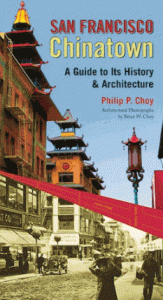
Philip Choy’s most recent book
Northern California author, historian, and Asian American studies professor Philip P. Choy
has a new book out,
San Francisco Chinatown A Guide to Its History and Architecture.
City Lights, the book’s publisher provides on its website the book’s front matter, preface, and introduction in a quick, easy to download pdf file. The pdf contains the first 27 pages of the book.
Click to get the pdf and view some reviews of this book.
